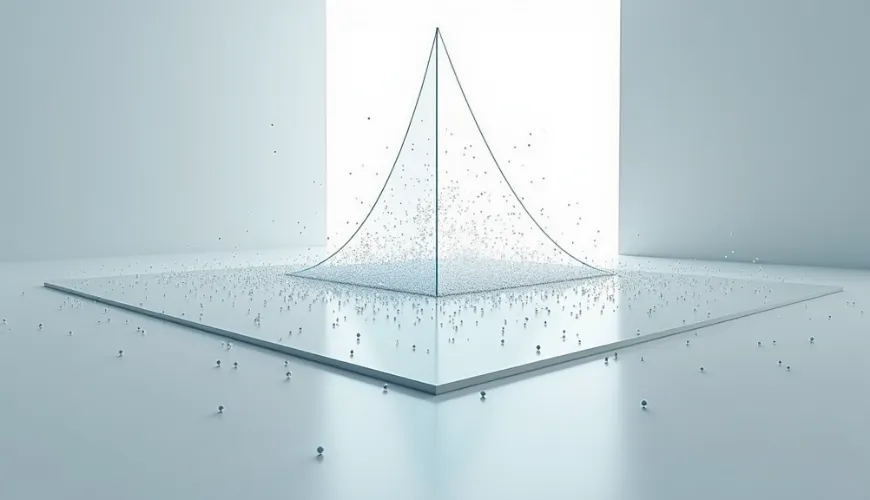With the rise of artificial intelligence (AI), identifying and analyzing images has become easier than ever. One of the most common questions for art lovers, historians, and researchers is: "Who painted the image above?" Traditionally, answering this question required extensive knowledge of art history or deep research in art archives. But now, with AI-powered image recognition tools, finding information about paintings, artists, and even hidden details within an artwork can be done in seconds.
How AI Can Analyze Images and Identify Artists
AI image recognition technology has made significant progress in recent years. Tools powered by advanced machine learning algorithms can scan an image, compare it with vast databases, and provide detailed information about its origin, artist, and style.
Here's how AI can help you identify paintings and analyze images:
AI can assist in artist identification by comparing an uploaded image with thousands of paintings stored in online databases. This allows the system to determine the artist with a high degree of accuracy, making it a valuable tool for art historians and collectors.
Beyond identifying the artist, AI is capable of art style recognition, detecting the specific artistic style and era of a painting. This feature helps users better understand the historical context of an artwork, contributing to both academic research and personal appreciation.
AI also excels in object and detail analysis, recognizing elements such as objects, facial expressions, and even the emotions conveyed in a piece. This can provide new interpretations of well-known works and offer deeper insights into the artist's intent.
For paintings that contain textual elements, text recognition allows AI to extract and translate inscriptions. This feature is especially useful for deciphering ancient or obscure languages, further enriching an artwork's historical and cultural significance.
Additionally, AI can assist with forgery detection by analyzing brush strokes, color patterns, and other intricate details to identify possible forgeries. This capability is crucial in the art world, helping experts verify authenticity and prevent fraud.
With AI-powered tools like Claila's "Image Analysis" tool, users can now perform these tasks effortlessly.

Claila's AI-Powered "Image Analysis" Tool
Claila is an AI platform that integrates various productivity tools, including image recognition, text generation, and AI-powered chatbots. One of its most powerful features is the "Image Analysis" tool, which allows users to upload an image and ask questions about it. Whether you're trying to identify an artist, understand a painting's symbolism, or analyze an image's details, Claila makes it easy.
How Does Claila's Image Analysis Tool Work?
Using Claila's AI-powered image analysis tool is simple. Here's how you can get started:
- Upload an Image: Click on the "Image Analysis" tool and upload a picture you want to analyze.
- Ask Questions: Type any question related to the image, such as:
- Who painted this artwork?
- What is the meaning behind this painting?
- What style does this image belong to?
- Receive AI-Generated Insights: Claila's AI will analyze the image and provide an instant response.
This powerful tool is perfect for art enthusiasts, historians, students, and casual users who want to explore the world of art without deep technical knowledge.
Real-Life Uses of AI Image Analysis
AI-powered image analysis tools like Claila are beneficial in many fields. Here are some real-world applications:
1. Art Enthusiasts and Collectors
If you're an art lover, Claila's Image Analysis tool can help you:
- Identify unknown paintings you come across in museums or online.
- Learn about art styles and techniques used in different periods.
- Discover similar artworks from the same artist or era.
For example, if you find an old painting in a thrift store and wonder if it's an original masterpiece, Claila can analyze the image and provide insights.
2. Students and Researchers
Students studying art history can use AI to:
- Quickly gather information on famous paintings.
- Understand artistic movements and their significance.
- Compare different artworks and their impact on culture.
Instead of spending hours searching through textbooks, students can upload an image and get immediate results.
3. Museum Visitors
Many museums now integrate AI-powered apps to provide visitors with interactive experiences. Instead of reading long descriptions, users can simply scan a painting and ask Claila:
- Who is the artist?
- What is the story behind this painting?
- What techniques were used to create this artwork?
This makes learning about art more engaging and accessible.
4. Content Creators and Writers
If you're a blogger, journalist, or social media influencer, Claila's AI tool can help you create engaging content. By analyzing images, you can:
- Generate detailed descriptions of artwork.
- Fact-check historical details before publishing content.
- Create compelling stories around paintings.
For instance, if you're writing an article about Vincent van Gogh, you can upload a painting and ask Claila for details about the artist's techniques and inspirations.
5. Everyday Users
Even if you're not an art expert, Claila's image analysis tool can still be useful. You can:
- Identify locations in travel photos.
- Recognize historical figures in paintings.
- Analyze symbols and hidden details in famous artworks.
For example, if you see a painting online but don't know its history, Claila can provide a detailed explanation within seconds.
Why Choose Claila for AI Image Analysis?
There are many AI-powered image recognition tools available, but Claila stands out for several reasons:
- Fast and Accurate Results: Claila uses advanced AI models to provide precise and reliable answers.
- User-Friendly Interface: The platform is designed for both beginners and experts, making it easy to use.
- Powerful AI Models: Claila integrates top AI models like ChatGPT, Claude, Mistral, and Grok, ensuring high-quality responses.
- Free to Use: You can create a free account on Claila and start using the Image Analysis tool right away.
The Future of AI in Image Recognition
As AI technology continues to evolve, image recognition tools will become even more advanced. Future developments may include:
AI is advancing toward more detailed image analysis, enabling it to detect intricate artistic elements such as brushstroke patterns and pigment compositions. This capability will provide deeper insights into an artist's technique and materials, enriching art appreciation and study.
Another promising development is instant translations of text within paintings. By automatically translating inscriptions, AI can help viewers understand historical or foreign-language texts, offering greater context for the artwork's meaning and cultural significance.
Additionally, voice interaction may become a key feature, allowing users to ask AI questions verbally. This would create a more interactive and intuitive experience, making art exploration more accessible and engaging.
By embracing AI-powered tools like Claila, users can unlock a world of knowledge with just a few clicks.
Start Exploring with Claila Today!
If you've ever wondered, "Who painted the image above?", now you have the perfect tool to find out. Claila's AI-powered Image Analysis tool makes it easy to identify paintings, analyze art, and discover fascinating details about any image.
Ready to explore the world of AI image recognition?



